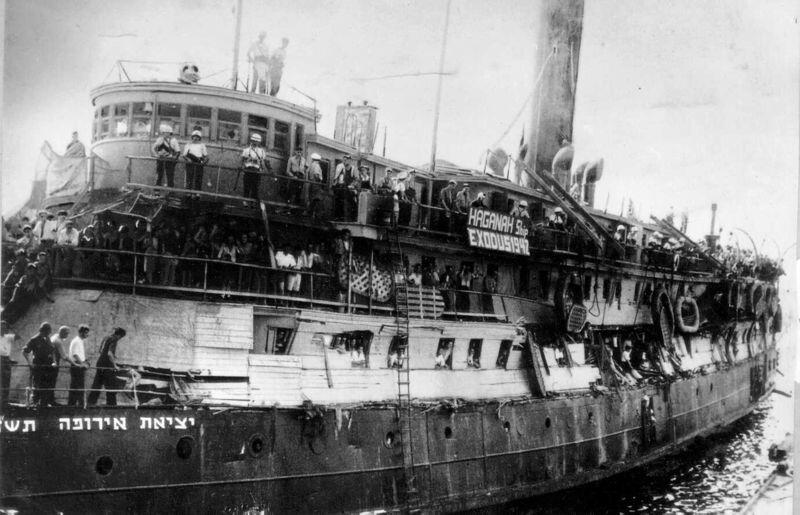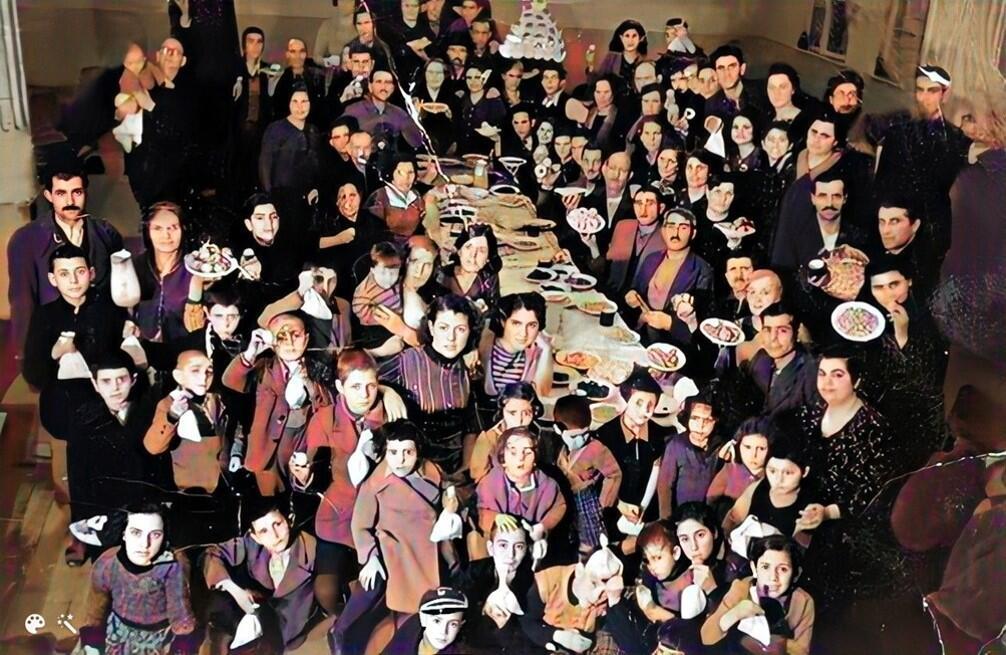The genealogy website MyHeritage posted 1.7 million Israeli immigration records online this week, making accessible a trove of ship and plane passenger lists stored in bound tomes at the Israel State Archives.
The records cover arrivals to the country for about 60 years starting in 1919. They include details such as the name of immigrants, country of origin, birth year, date of arrival, destination city and the name of the vessel they arrived on.
2 View gallery


The SS Exodus carrying Jewish immigrants from Europe to the Land of Israel, 1947
(Photo: PiciWiki)
MyHeritage is billing the records as the Israeli version of the Ellis Island database, and historians and genealogists have endorsed this view, calling the release a major moment for the field.
“The amount of information now available, and for free, is huge,” said Garri Regev, president of the Israel Genealogy Research Association.
The records are not just for experts; anyone interested in looking for details about the immigration of their relatives or others can use this dedicated website and search by names and other details.
Knowledge of Hebrew, the language of the original immigration lists, isn’t required. MyHeritage, headquartered in Or Yehuda, Israel, and Salt Lake City, Utah, ran every record through translation software, making them searchable in English and other languages. (Salt Lake City is a hub of genealogical research because it is home to the Church of Jesus Christ of Latter-Day Saints, known as the Mormon Church, which has a theological interest in ancestry)
The Israeli data is comprehensive but not complete: Some immigration lists were missing from the archives, and some were in poor condition, affecting the quality of the scan. But genealogists encourage the public not to give up too quickly since names may have changed and spellings vary.
2 View gallery


Families of Jewish immigrants from Bulgaria, 1940
(Photo: Courtesy of ANU — Museum of the Jewish People)
“You have to be creative when you search,” said Rose Feldman, who develops databases for the Israel Genealogy Research Association. “Sometimes it is by looking for the child accompanying the parents, sometimes by searching by the given name and year of birth or if you know the year of arrival. It is free, so it is just your time that is required.”
MyHeritage was an Israeli-owned company until it was acquired by Francisco Partners, a San Francisco-based private equity firm, for a reported $600 million in 2021.
Asked why the company went through the work of digitizing and indexing the files only to provide access to information for free, My Heritage’s director of public relations, Sarah Vanunu, said the company has released records for free in the past and that doing so is part of its public mission.
“We see it as part of our mission to connect people with their family history through important historical records and amazing collections, and a gift to the community,” Vanunu said.

